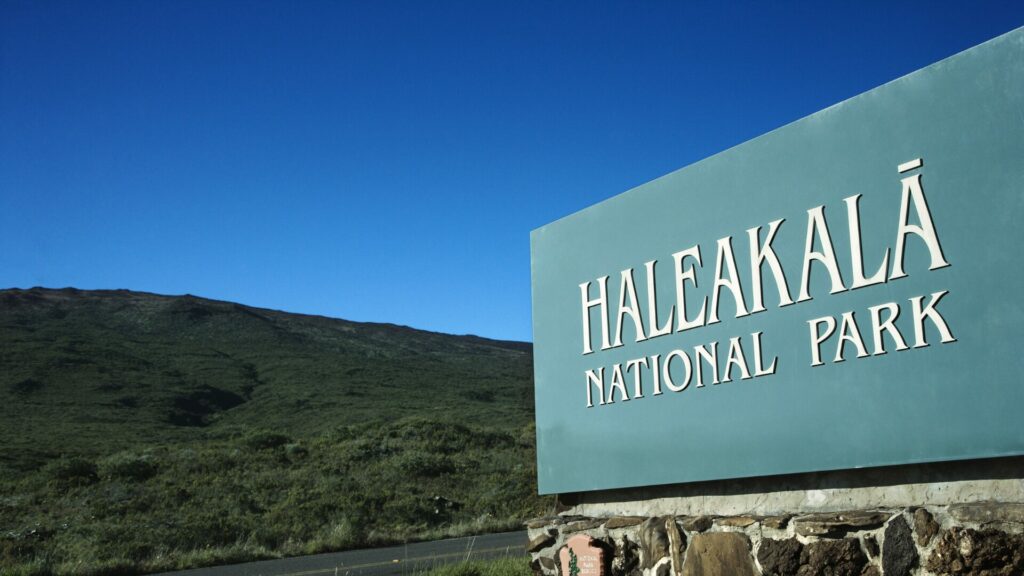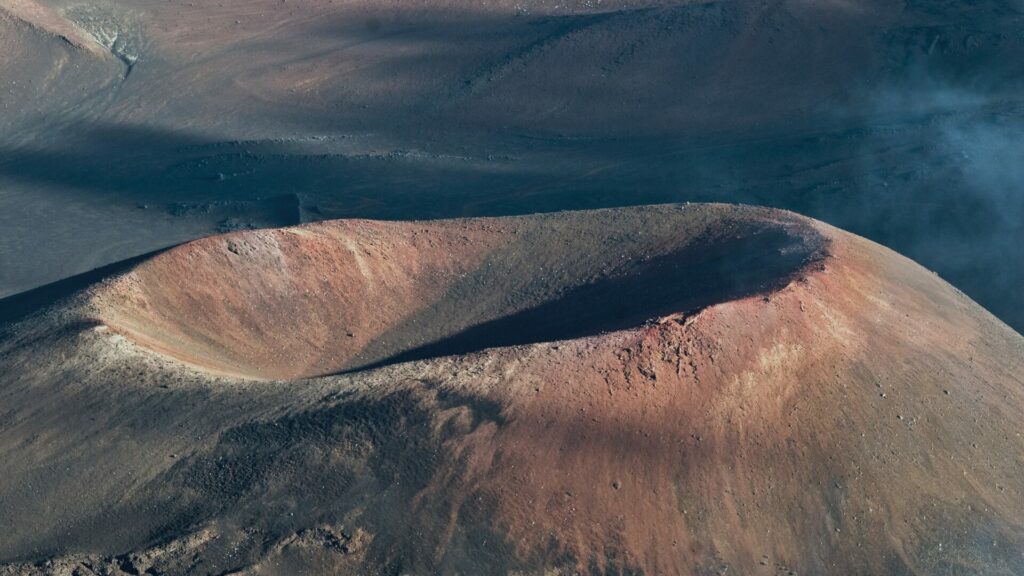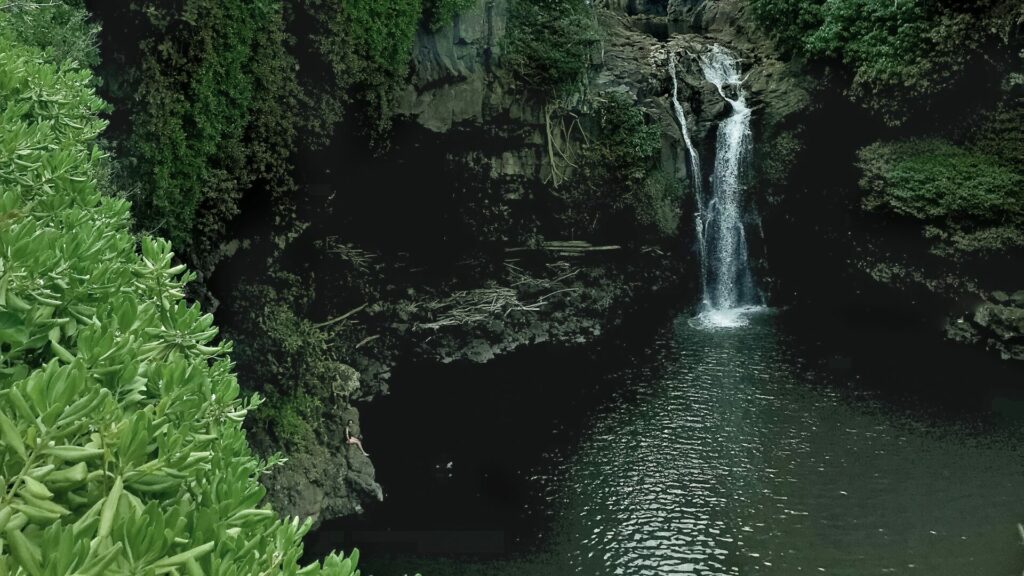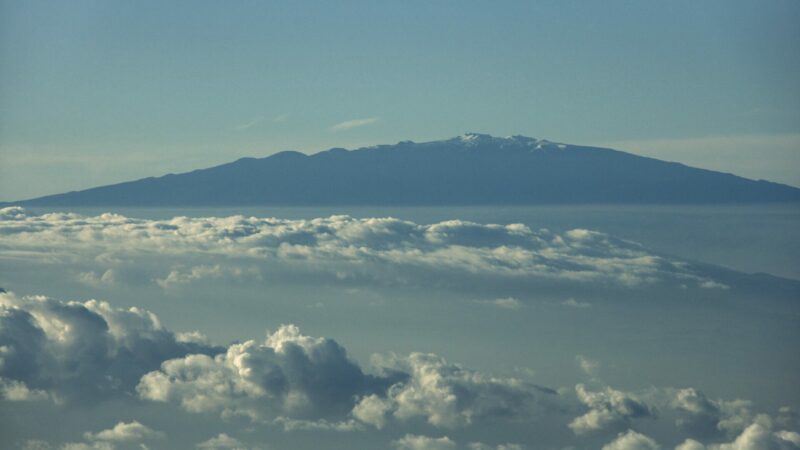Table of Contents Show
There’s a special bond between the Hawaiian people and the land, just like there is between the native tribes of the mainland and the land. This is something we’ll never entirely understand but have considerable respect for when we travel to different places.
Haleakala National Park is a place where you can learn more about ancient and modern Hawaiian culture while exploring the rugged landscape of cinder cones, rocky coastline, and lush rainforests that define life here. Let’s dive in and learn more about this unique national park and what you can expect when you visit!
Pro Tip: Check out these National Parks You Definitely Can’t Visit in an RV before planning your next trip!
Where Is Haleakala National Park?
The sacred landscape of Haleakala National Park is located in the southeast region of Maui. This Hawaiian island lies between the Big Island and Moloka’i. Maui is the second-largest Hawaiian island, with an area of 727 square miles.
While only about 168,000 people live on Maui, Haleakala National Park welcomed over one million visitors in 2022. The park has averaged over a million visitors a year since 1984.
When Did Haleakala National Park Become A National Park?
In 1916, Congress established Hawai’i National Park. It included the Haleakala section. In the early 1930s, the road to the summit of Haleakala was built, and the Visitor Center was added in 1936. During World War II, the U.S. Army occupied Haleakala, and the park was closed to the public.
During the ‘40s, other buildings were built, and the Kipahulu Valley was added to the national park. In 1959, Hawai’i became the 50th state. Just two years later, the Hawai’i National Park’s units were separated and redesignated as Haleakala National Park and Hawai’i Volcanoes National Park. Haleakala National Park became our country’s 29th national park.

What’s So Special About Haleakala National Park?
Haleakala means “House of the Sun” in Hawaiian. It’s known for its spectacular sunrises and sunsets on the island of Maui. Haleakala National Park preserves the volcanic landscape of Haleakala and protects the unique ecosystems of Kipahulu Valley, including several endangered species.
The summit of Haleakala rises to just over 10,000 feet, and the park extends to the coastline. Due to its vast elevation differences, Haleakala National Park has five climate zones with plants and animals that live nowhere else in the world. In 1980, the park was designated an International Biosphere Reserve, and most of its 30,183 acres are designated wilderness.
3 Most Popular Attractions In Haleakala National Park
There is so much to do at Haleakala National Park. Miles of hiking trails allow visitors to explore the two distinct regions of the coastal Kipahulu District and the higher Summit Area. We believe traveling on foot is the best way to enjoy your time in Haleakala National Park.
But if we have to narrow down our choices to the top three attractions in this national park, we highly suggest watching a sunrise, hiking into the Haleakala Crater, and enjoying the view of Makahiku Falls.

1. Watch A Sunrise
The best places to view a sunrise in Haleakala National Park are at the Pu’u Ula ula or Red Hill summit, the Haleakala Visitor Center, the Kalahaku Overlook, and the Leleiwi Overlook. The Pu’u Ula ula is the highest point of the four at 10,023 feet.
Each parking lot closes when it’s full, so we suggest arriving early. When a national park is named “House of the Sun,” you must watch the beautiful array of colors rising over the horizon at least once. You need reservations to watch a sunrise, so check out the details on Recreation.gov.
2. Hike Into Haleakala’s Crater
You might think you’ve been transported to another world on the hike to Haleakala’s crater. A natural overlook provides views of the cinder cones about one mile into the hike. This point is about 500 feet lower than when you started, so be prepared for a more strenuous hike back up. The hike begins at the Keonehe’ehe’e Trailhead at the Haleakala Visitor Center, where you’ll find plenty of parking.
3. View Makahiku Falls
The hike to Makahiku Falls is shorter and easier than the hike to Haleakala’s crater. It’s about one-mile round-trip. It takes 0.5 miles to reach the 200-foot waterfall, which has carved a beautiful valley.
If you want a longer hike, the Pipiwai Trail continues for another 1.5 miles, ending at another waterfall, Waimoku Falls. Park at the Kipahulu Visitor Center and follow the paved trail to a T-intersection, where you’ll take the Pipiwai Trail to the Makahiku Falls Overlook.

Haleakala National Park isn’t just about stunning sunrises and sunsets. The evening sky is also awe-inspiring. From the summit of Haleakala, visitors enjoy breathtaking views of the night skies because the atmosphere is cleaner with less light pollution. However, make sure to pack proper clothing as it gets chilly once the sun goes down.
Best Places For Camping Near Haleakala National Park
If you’re looking to camp as close to Haleakala National Park as possible, three campgrounds are within its boundaries. However, there’s a stay limit of three nights total for all Haleakala National Park areas in a thirty-day period. Pets aren’t permitted in some areas, so make sure to read the details of the campground before making a reservation. This national park isn’t particularly pet-friendly as they aren’t allowed on many hiking trails either.
The Hosmer Grove in the Summit District has six sites with a picnic table, grill, and access to potable water. This is a tent-only campground and costs $5/night. The Kipahulu campground is near the Kipahulu Visitor Center. It’s $8/night and overlooks the ocean cliffs near ‘Ohe’o Gulch. Twenty sites are available for tent campers.
Haleakala National Park also has wilderness cabins for rent for $75/night. There’s still the maximum three-night stay limit, but this is an alternative for visitors who don’t want to tent camp. If you want to stay overnight in your RV, you’ll find it challenging to locate campgrounds that accommodate anything larger than a truck camper. So, these wilderness cabins may be your best bet to stay close to Haleakala National Park.
Pro Tip: Take a look at whether Visiting the Kenai Fjords is actually worth your time before planning an adventure out there!
Is Visiting Haleakala National Park Worth It?
Hawai’i is unlike any of the other fifty states. But it’s not just the tropical climate and Polynesian culture that make it unique. The landscape is simply breathtaking. The islands themselves were formed as a result of volcanic activity. Haleakala National Park and Hawai’i Volcanoes National Park on the Big Island protect this fragile ecosystem and incredible geology.
So, if you’re planning a bucket list trip to Hawai’i, we encourage you to spend a day exploring the sacred landscapes of cinder cones, lush rainforests, and rocky coastlines at Haleakala National Park.






